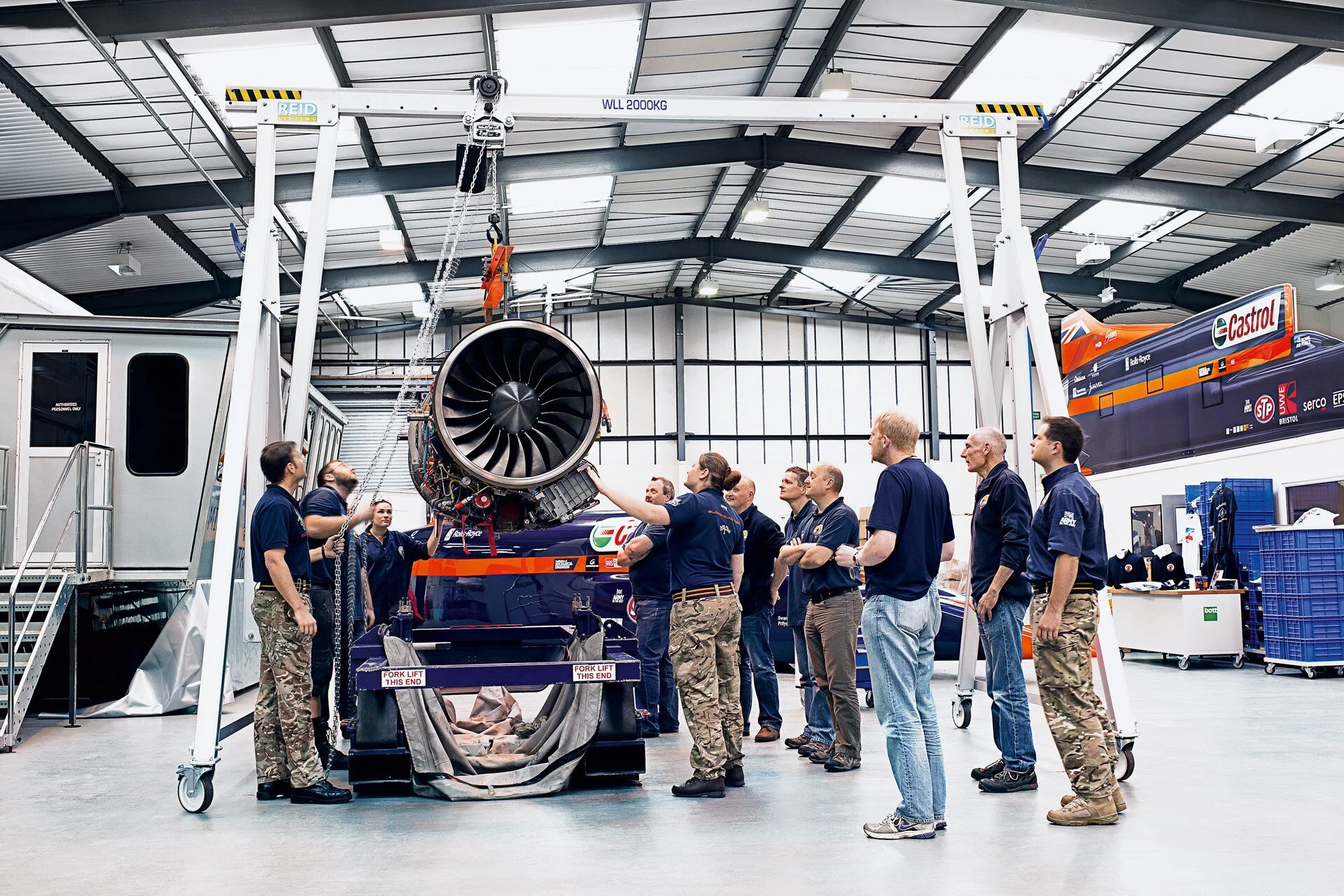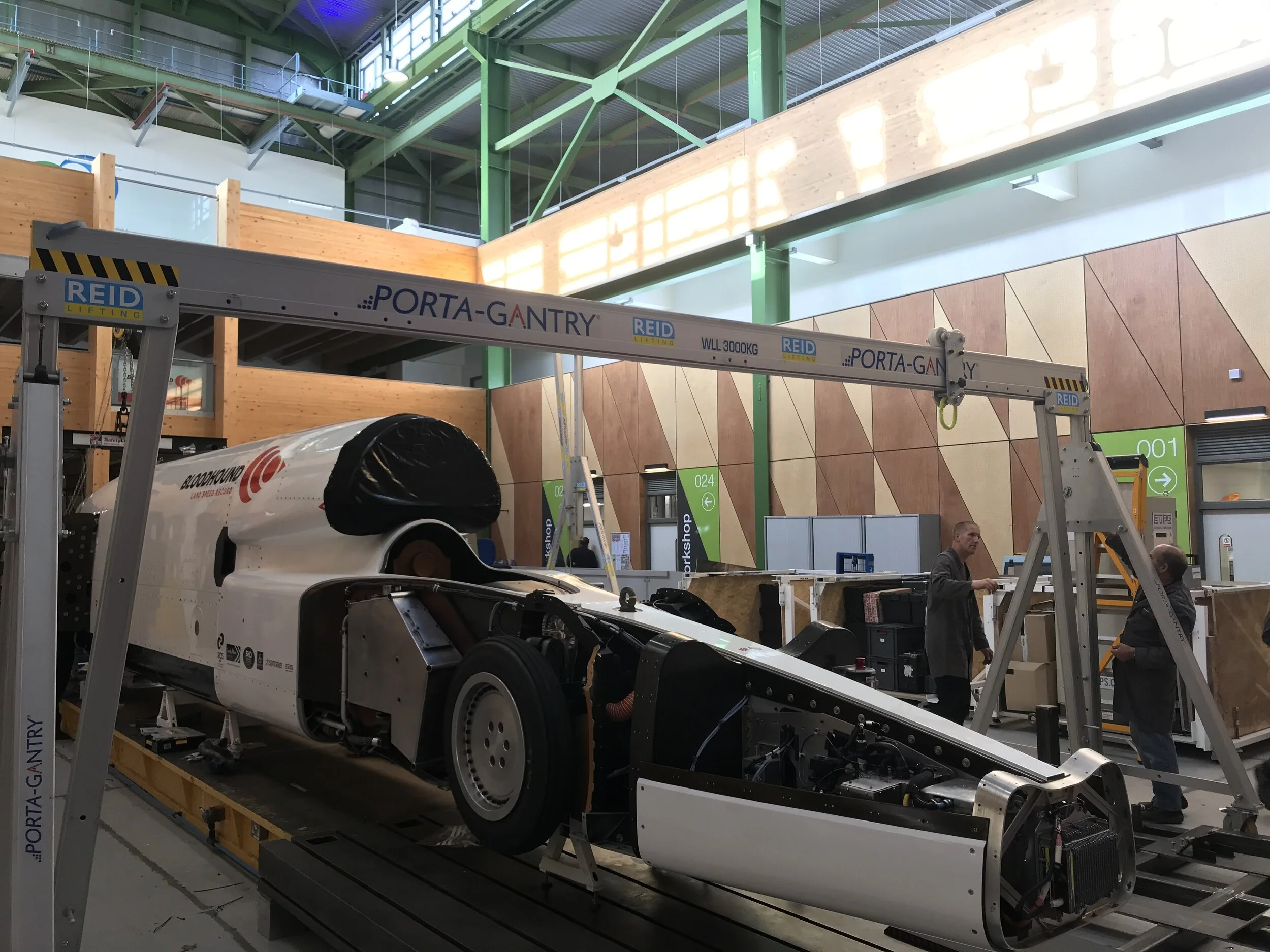Download this case study by clicking the link below.
REID has partnered with the team behind the Bloodhound supersonic car to provide bespoke gantry lifting systems, as they prepare to set a brand new world land speed record.
The background
The Bloodhound Project is one of the world’s most exciting and ambitious engineering projects. It aims to smash the 20-year old, 763mph land speed record held by Thrust SSC, with a vehicle which is part F1 car, part fast jet and part rocket ship.
As well as place in the record books, the real purpose of the project is to provide a spectacular showcase of British engineering to a global audience. Pushing boundaries and demonstrating pioneering new technologies, it is an international education initiative which hopes to engage and inspire people of all ages with the most extreme applications of science, technology, engineering and maths (STEM).
Based at the UK Land Speed Record Centre in Berkeley Gloucestershire, Bloodhound LSR is currently working through a plan of high profile, high-speed testing, ready for its attempt on the world record 2020/21.
The challenge
Bloodhound LSR needed tall, portable gantry lifting solutions which it could use at its construction and technical centre and take to testing locations around the world. Initially, these needed to be capable of lifting the upper chassis and a 1.5 tonne Rolls Royce EJ200 jet engine normally found in a Eurofighter Typhoon fighter plane, but over time the requirement has extended to lifting the whole vehicle.
Lifting solutions had to be easy to assemble and transport, as well as being customisable to suit the rapidly changing demands of the project.
The Solution
REID’s partnership with Bloodhound goes back to 2014 when the team originally ordered a PORTAGANTRY 2000 lifting system with a 4570mm long beam and integrated CMCO Yale 300 chain block via an approved reseller.
Since then, REID has become a partner in the project, advising the team on which products to choose and providing training on how to use and maintain them. It has also supplied a number of additional systems including a bigger, custom built PORTAGANTRY 3000 in 2015 with an 8000mm long beam. This has a chain free, rope controlled system for movement of the trolley and wind-up jack legs for uneven ground and load spreading for use in the desert testing location.
Both of REID’s PORTAGANTRY units were used at the 2017 Bloodhound 200 high speed test when it reached 200mph at Cornwall Airport, Newquay and, more recently, at the 2019 Bloodhound 500 test when the vehicle reached an incredible 628mph (1,010km/h) down a specially created racetrack at Hakskeen Pan in the Kalahari Desert, South Africa. (That’s the equivalent of driving the 414 miles from London to Edinburgh in just 39 minutes.) REID’s products featured prominently in the media coverage which accompanied both tests.
Key to the success of the partnership has been REID’s ability to work closely with the Bloodhound team as the project has developed. For instance, before the South African run, they needed to test the hinges on the hydraulic doors which form part of the vehicle’s braking system, alongside a parachute and braking on the wheels. REID was able to supply tackle and gantries which enabled the team to test weights on the hinges of up to 5 tonnes and replicate the forces they would face.
The feedback
REID engineers are now official Bloodhound STEM ambassadors, using the inspirational Bloodhound project to spread their passion for engineering to students in schools across South Wales and South West England. REID’s high profile success on this project has also led to the supply of similar PORTAGANTRY units to aerospace engine manufacturers in the UK to support their lifting requirements.




